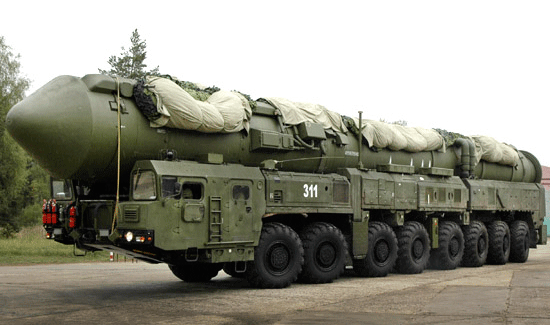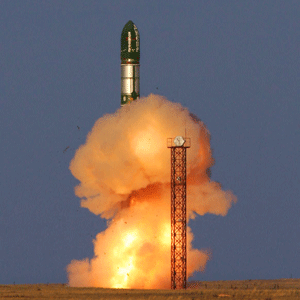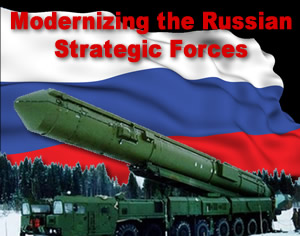
While ballistic missile developments in Iran, North Korea, India and China are capturing the headlines, strategic forces of the world’s two superpowers undergoing profound changes and modernization. This article highlights new developments in the Russian Strategic Missile Force (RVSN), a follow-on article will overview the evolution of the US missile defense capabilities and the status of their strategic forces, under the New START treaty. For consistency, this article will refer to all missiles by their NATO designations, and, where such designation is unavailable – by the Russian designation. The article appearing on this page is an excerpt of the full version, available exclusively to Defense-Update subscribers.
To read the full version please log in or subscribe.

According to the biennial report stating the aggregate numbers of “strategic offensive arms” under the New START treaty, the US has the largest arsenal of nuclear warheads, with 1,688 deployed weapons, compared to the Russian arsenal of 1,400 deployed warheads. The US also has largest fleet of nuclear carrying platforms – 809, compared to 473 deployed by the Russians.
But the numbers don’t tell the whole story. While the US is maintaining and steadily reducing its inventory, to meet the treaty’s limits, the Russians strive to improve their arsenal with more capable weapons. According to open sources, the Russian Strategic Missile Forces currently operates at least 58 silo-based SS-18 Satan ballistic missiles, 160 road-mobile Topol (SS-25) missile systems, 50 silo-based and 18 road-mobile Topol-M (SS-27) systems, and 18 SS-29 Yars systems. At sea the Russians maintain eight Delta III/IV nuclear ballistic missile submarines remaining in service.
By 2020, the RVSN is expected to convert all SS-25 and SS-19 missile units to the SS-27 and SS-29, fielding eight divisions with a total inventory of over 170 mobile and silo-based SS-27 and 108 SS-29 silo-based missiles. The deployment of follow-on ICBM, the Yars-M and R-26 Rubezh, was expected in 2013, but hasn’t officially announced yet. (Read about the new missile: “New ICBM Under Development in Russia“)
Resulting from this plan, all liquid-propelled silo-based SS-19 Stiletto missiles will be decommissioned by 2017, leaving only 30 SS-18 (out of the current 58). (More on the new LP mega missiles: “Return of the Russian Missile Trains“)
Besides the missile force, the Russian strategic triad comprises submarine-launched missiles and strategic bombers, delivering air-launched nuclear weapons. The principal nuclear armed weapon to equip those platforms is the Kh55 cruise missile, and its latest variant – Kh-102 that has entered service in the 2000s. The Tu-95MS can carry eight such missiles, and the Tu-160 carries 12 on two rotary launchers. These bombers will eventually be replaced by the future bomber known as ‘PAK-DA’, under development by the Tupolev design bureau, that has won the development tender offering a subsonic, stealthy “flying wing” design. (Read more in the article: “Russian Air Force to Field a Stealth Bomber By 2020“)
The third part of the triad is a fleet of ballistic missile submarine force, carrying the SS-N-23 Submarine Launched ballistic Missile. This weapon has entered service in 2007 and is currently operational with three delta III and four Delta IV submarines in service with the Russian Navy. An improved version of this weapon is the R-29RMU2 Layner, introducing improved countermeasures, improving its capability to penetrate enemy missile defenses. Development of the new missile was completed in 2012. The solid-propelled RSM-56 Bulava has yet to become operational, after repeated failures in flight testing. (Read more on these missiles: “Russian SSBN Fleet to Receive Improved R-29 Missiles“)
A comprehensive review of the RVSN is available on Ausairpower.net.
Comparison of Current Russian Strategic ICBM


















